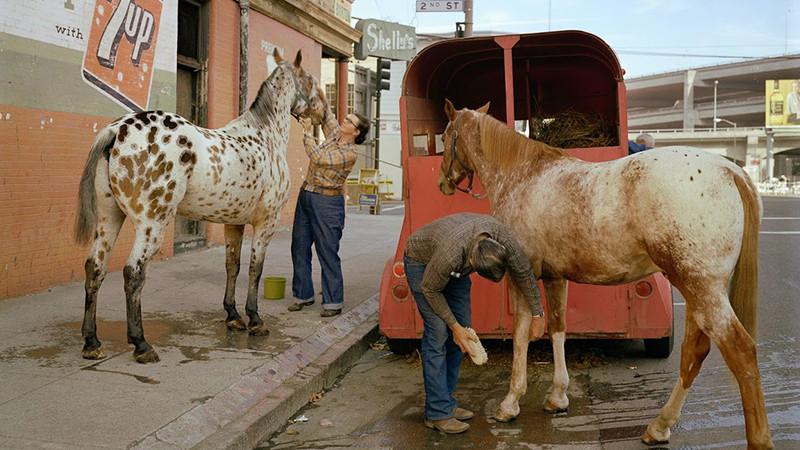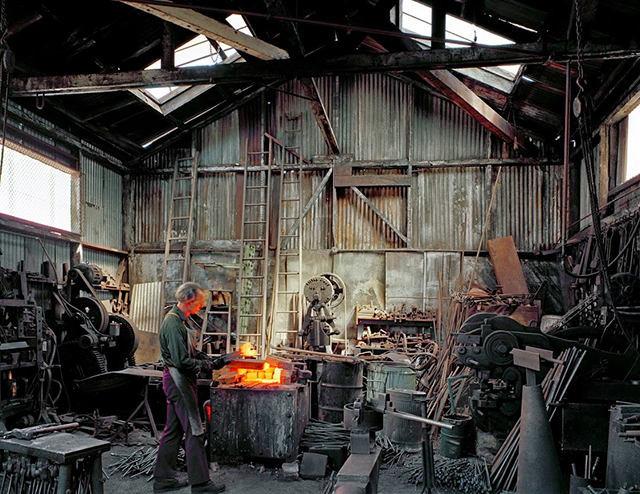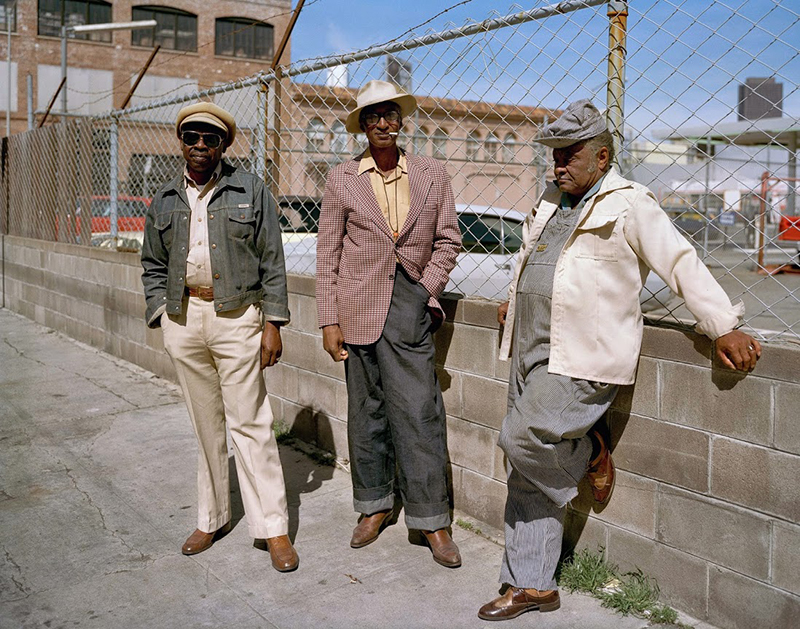Having documented San Francisco’s ever-evolving communities in the ’70s and ’80s, photographer Janet Delaney offers a retrospective moment for a city presently undergoing yet another sea change in South of Market, a new exhibit at the de Young Museum. Concurrently, illustrator Wendy Macnaughton chronicles local neighborhoods through her “drawn journalism.” Both of these artists create images that will portray the future history of San Francisco, and thus, in a meeting of the minds, we asked Macnaughton the illustrator to ask Delaney the photographer a few questions about the changing face of the city.
Your South of Market series documents a pivotal time in San Francisco, when thousands of people’s homes were replaced by more upscale developments. Clearly, this is happening again in the city. Neighborhoods are changing, communities are changing. From the point of view of a photographer, how do you see this change being similar or different than the changes that occurred before?
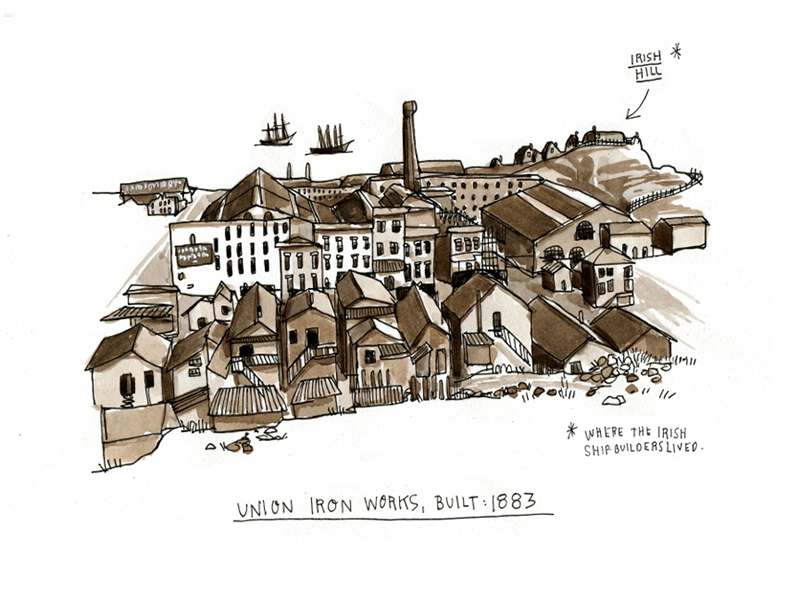
When I was photographing South of Market, I was focused on the impact that the new Moscone Center would have on the people who lived and worked in the area. This idea defined the project to a specific cause and effectual argument, but I knew that it was indicative of a much bigger issue. Rents had already started to rise even before the center was completed. But it took many years for the area surrounding the convention center — the “cordon sanitaire,” as the city planners named it — to fill in with hotels and museums. Now, with the new TransBay terminal and high-rise housing coming in, the initial plans of a revitalized downtown seem to be in place. There has been a massive influx of money to San Francisco, because it’s become very welcoming to big business. Great! But how can we harness this new wealth to help stabilize a diverse and vibrate community, and avoid making San Francisco into a homogeneous playground for the upper class? SFfound.org lists all the ideas that did not happen, but could have, in terms of development in the Bay Area. Things could be worse if people had not stood up and organized. Yes, I see similarities to the changes I was documenting, but to the credit of many who have invested their time and imagination, some of the changes are definitely for the better. Buying local, hiring local, investing in housing and transportation and supporting the arts will all be more possible with a bigger tax base.
You seem to get great local access—in construction sites, in people’s homes, and generally in every neighborhood. You must be welcomed in order to get the shots you do. How do you do that?
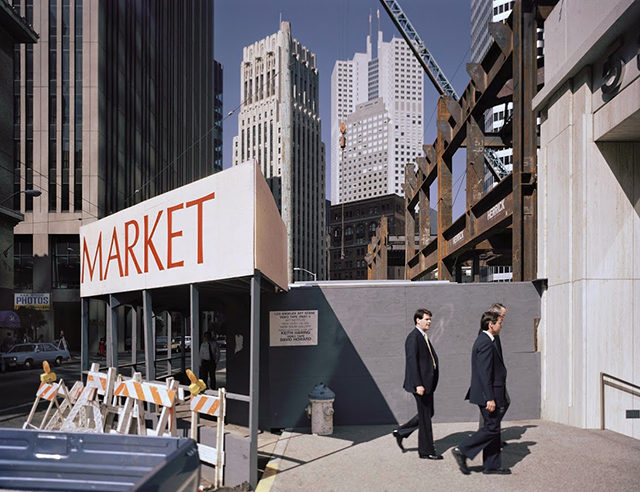
Initially, I snuck onto the construction sites. In the 1970s, they had very little security and rarely worked on the weekends. Eventually I got permission to photograph in the Moscone Center, though by the time I had permission, I was almost done with photographing there. Perhaps the clandestine nature was part of the thrill! I used a view camera which lent credibility to my efforts. I was slow and deliberate, so if someone did not want to be photographed, they could certainly walk away before I even finished setting up the camera. Also, I knew people well, because I lived in the neighborhood and saw them every day.
